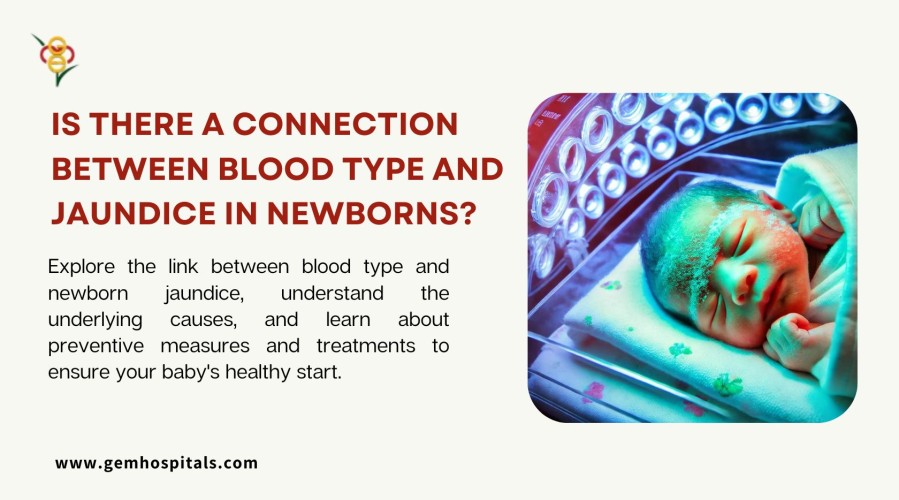Food poisoning is common during the monsoon. Learn when it becomes serious, how it can lead to pancreatitis or liver damage, warning signs, and when to seek medical care.
Is there a connection between blood type and jaundice in newborns?

Welcoming a newborn is going to offer immense joy to your family but you should remember they may also come with health concerns specifically neonatal jaundice. Jaundice is a kind of health condition that arose due to overproduction of yellow pigment bilirubin by the breakdown of red blood cells. It has to be treated properly even in adults in that case when neonates get jaundice critical care should be provided to them to resolve the condition and to make them healthy. Most people don’t even have an idea that the blood type of neonates has a connection with the likelihood of developing jaundice. If you are waiting to welcome your baby it is time to know all these facts, keep reading the content below and make yourself knowledgeable to provide them with add-on care.
Understanding jaundice in newborns
Neonatal jaundice appears in newborn babies within a few days after birth. This is the condition that arises due to the production of excessive bilirubin pigment by RBC breakdown but the immature liver of the baby couldn’t excrete it. The factor behind the condition is that in newborns RBC turnover will be higher but the liver is not fully matured. In the mild stage of jaundice, there is no need for any worries but when it turns severe it may lead to serious complications even brain damage.
The role of blood type
There is a blood type incompatibility between the infant and their mother that may raise the chance for jaundice development in neonates. The well-known blood type incompatibility is the Rh factor, but ABO incompatibility also plays a critical role.
Rh incompatibility
Rh incompatibility generally occurs if a Rh-negative mother carries a Rh-positive infant in her womb. When the Rh-positive cells of the baby enter into the mother’s bloodstream the mother’s body starts producing antibodies against the baby’s blood cells due to the breakdown of RBC in the infant bilirubin level will be increased as a result jaundice occurs. This condition is called hemolytic disease of the newborn. Fortunately, these days Rh incompatibility is less in the count because of the administration of Rh immunoglobulin to the Rh-negative mother during and after pregnancy.
ABO incompatibility
ABO incompatibility is a condition that arises when a mother’s blood type is O and the baby’s blood type is going to be A or B. In such cases, the mother’s blood carries anti-A and anti-B that cross over the placenta and start destroying the baby’s O blood type due to bilirubin building the risk of getting neonatal jaundice increases. Like Rh incompatibility, ABO incompatibility couldn’t be prevented by immunoglobulin.
Symptoms and diagnosis
In common neonatal jaundice could be diagnosed with the help of physical examination and blood tests. As the neonate gets jaundiced the skin and eyes of them are going to change in yellow color which is the visible sign of neonatal jaundice, in the initial stage it starts from the face and slowly the yellowing will spread downwards. Even though yellowing could be the sign to confirm whether the infant is getting jaundice further tests are done like direct Coombs test, evaluation of bilirubin level, and blood type testing.
With the help of the above content, you would have got to know how the blood type of a newborn and mother brings up neonatal jaundice. While this type of jaundice is harmless proper monitoring and treatment are vital to ensure they are in good health. As the condition worsens it may lead to serious complications in neonates. As a parent knowing about it and observing each movement of the neonate is important to be aware and be active in taking care of your younger ones.
For effective jaundice treatment, trust GEM Hospital’s experienced specialists. Receive personalized care and advanced solutions. Schedule your consultation now for comprehensive health management.
Blogs & Article
UTI cases often rise during the rainy season. Learn why urology patients need extra precautions, common causes, symptoms, and prevention tips to stay healthy during monsoon.
Monsoon humidity can worsen endometriosis pain and bloating. Learn how weather changes affect symptoms and discover practical tips to manage discomfort during the rainy season.


